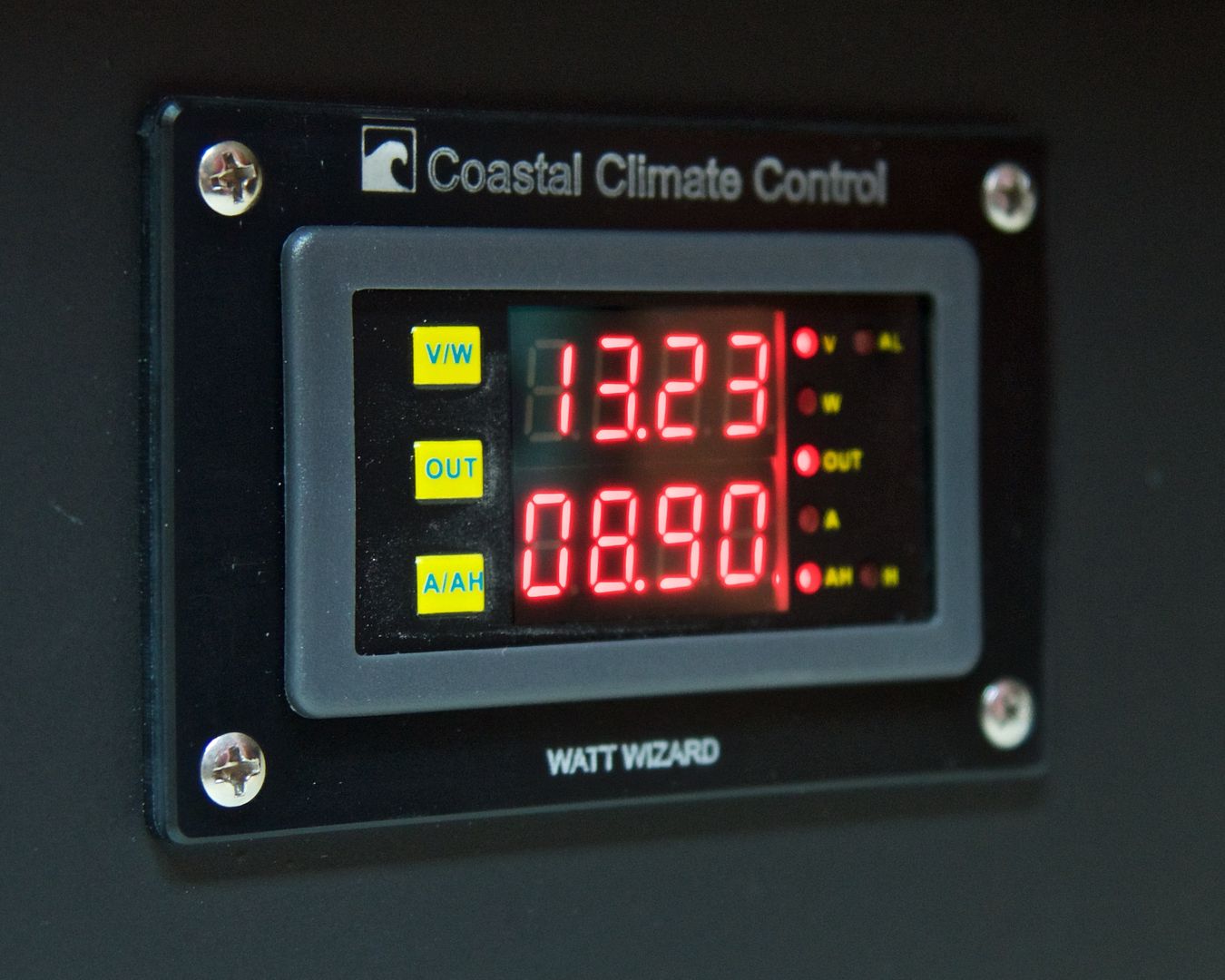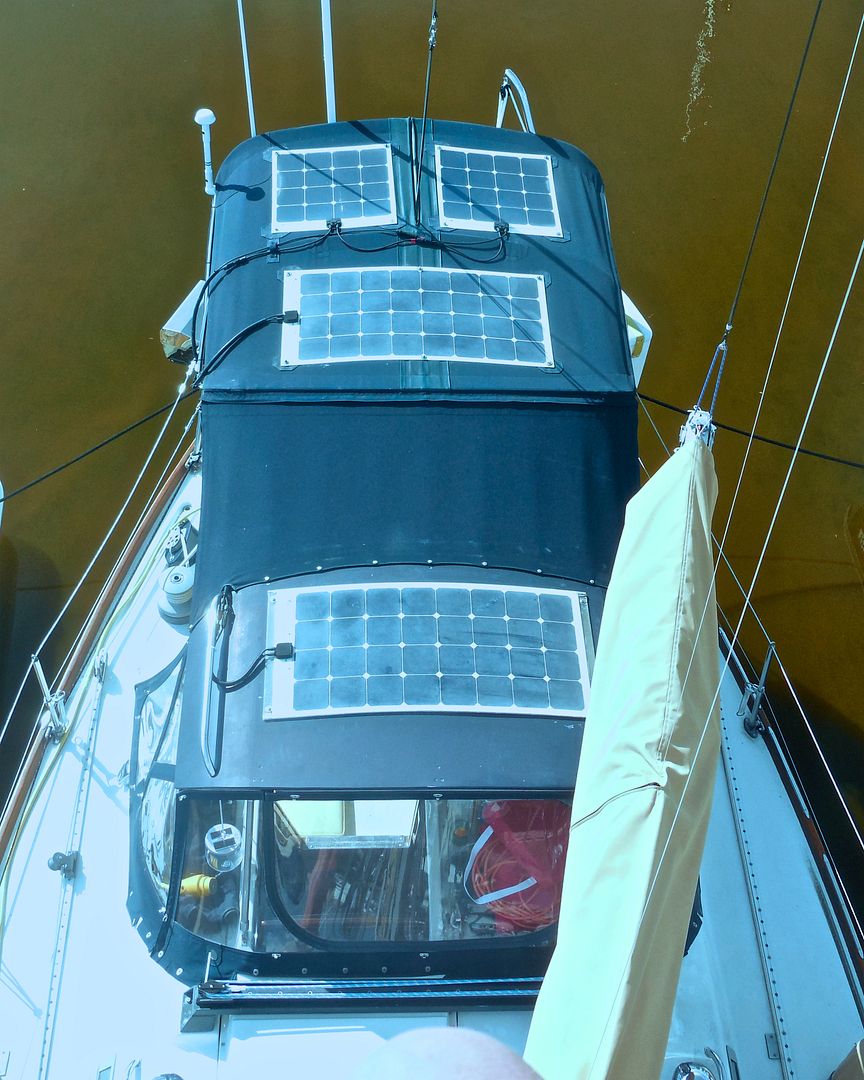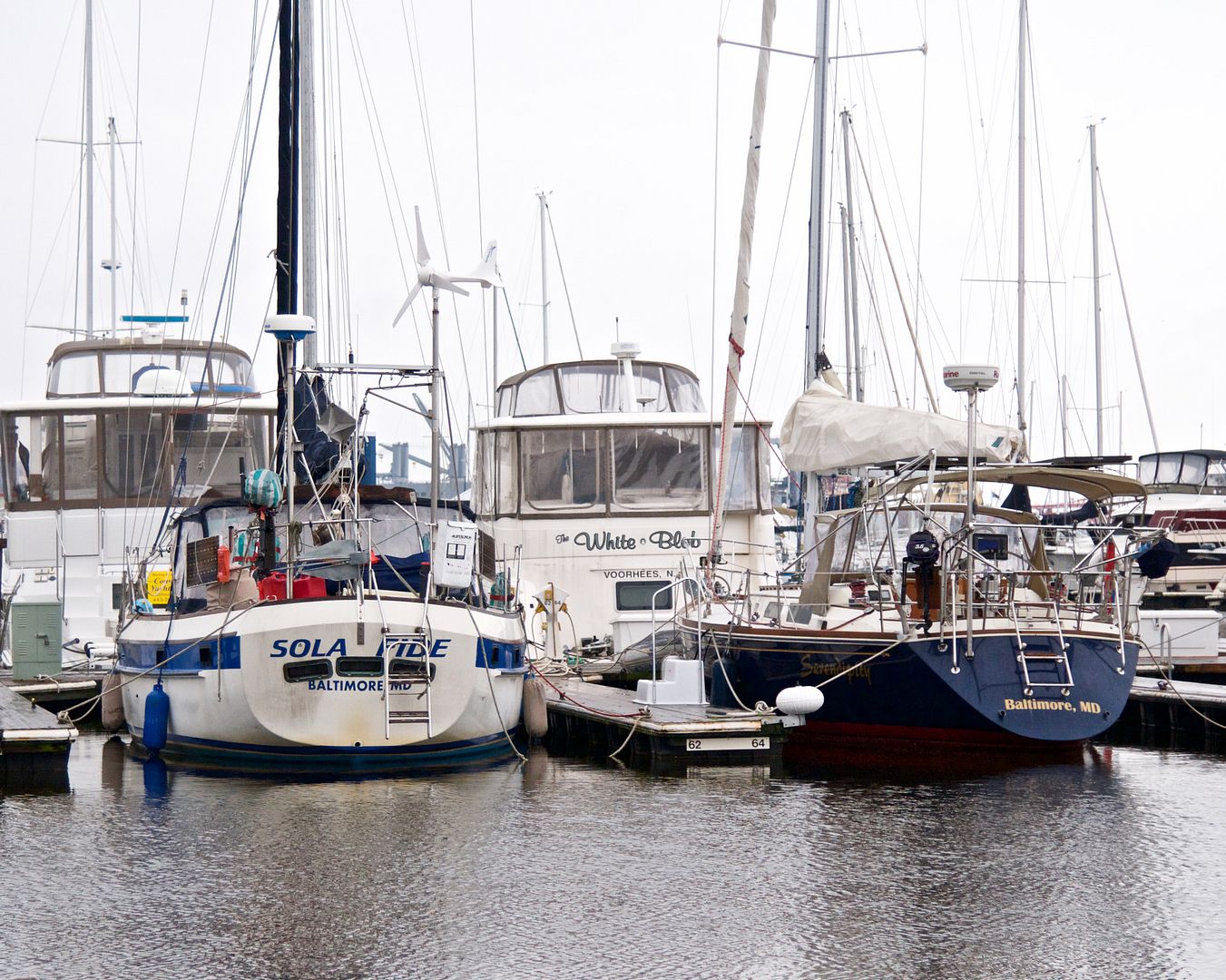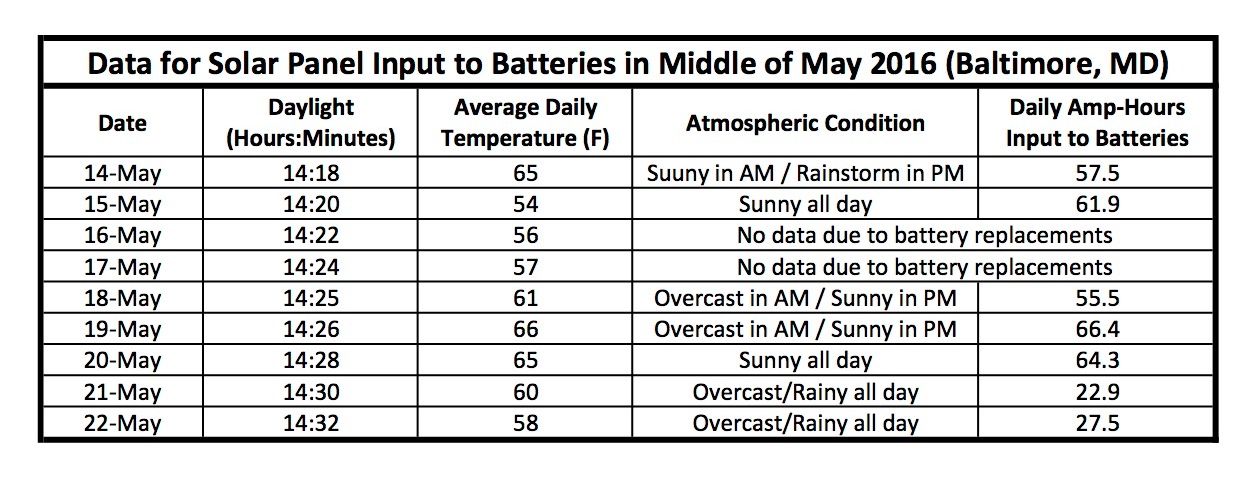Watt Wizard - Part 2
--Blogpost written by Bob
I installed the Watt Wizard eleven days ago. (Read more about the installation here.) Since then we have had both overcast/rainy days as well as a few sunny days, more overcast/rainy than not.
 |
| I installed the Watt Wizard in a new aluminum electrical panel that I made to match the other electrical panels at the companionway. |
Over the past eleven days I have witnessed the power input to the onboard battery banks vary from 3 or 4 amps on overcast/rainy days and up to 8 or 9 amps at mid-day on sunny days. The power generally diminishes to zero as it gets dark after 8 PM.
We have been using our solar panels as if we were cruising. The only thing we have used shore power for during the past several weeks is our HVAC. (Incidentally, we have been using our reverse-cycle heat during the night most of the month of May.)
Our (Solbian-Brand) flexible solar panels are mounted on top our hard dodger and bimini. They face directly upward and I'm sure they produce the most power when the sun is directly overhead. We have no means directing the solar panels toward the sun at it angles away from directly overhead.
 |
| We have three 100-watt banks of solar panels on the top of our hard dodger and bimini. |
We have three solar panel banks of 100 watts connected to each of three (Genusun GV-10) voltage controllers. For the most part, our panels are unobstructed from the sun's rays directly overhead.
 |
| We've had a lot of overcast and rainy weather lately in Baltimore. |
I decided to run a test over eight days to evaluate how much solar energy our solar panels are producing. Of course, what I'm measuring is how much energy is being added to the battery banks--this is an important distinction because the voltage controllers will follow the charging needs of the battery banks. Just because we have 300 watts of solar panels doesn't mean we are putting that much power into the battery banks, unless they are low and we have a lot of sunshine.
I reset the Watt Wizard the evening before the start of this test in preparation to measure the first day's input into the battery bank. At the end of each day, I recorded the day's amp-hours produced and then reset the Watt Wizard for the next day. Besides the daily power input in amp-hours, I also noted the general atmospheric condition, and the average daily temperature. (Higher daily temperatures causes our air-cooled refrigeration to cycle slightly more often and use slightly more power.)
During this test, and as we anticipate while cruising, both battery banks (4 batteries) were in use at all times. I didn't take any data on May 16 and 17 because we replaced the two batteries on one battery bank on portions of these two days and only one battery bank was being used for a portion of each day.
My test results follow:
Summary
Clearly, I can't simply count on anywhere near 300 watts of solar power production all day everyday. Solar power production continues from sunrise to sunset, though at widely varying rates. To some extent, the solar power input to the batteries depends on the charge state of the batteries since the voltage controllers cut back to follow the needs of the batteries.
While we will be cruising in the Bahamas during the winter, the sunlight will generally be several hours shorter each day than this test but there will be fewer overcast/rainy days (or I will go mad!). I don't think this test has really proven anything about the adequacy of our solar panels or battery banks--or maybe it has and I should leave well enough alone. We will continue our quest for more efficiency in our refrigeration system, the single largest onboard electrical demand on our sailboat.
Thanks for following our blog!

This comment has been removed by a blog administrator.
ReplyDelete